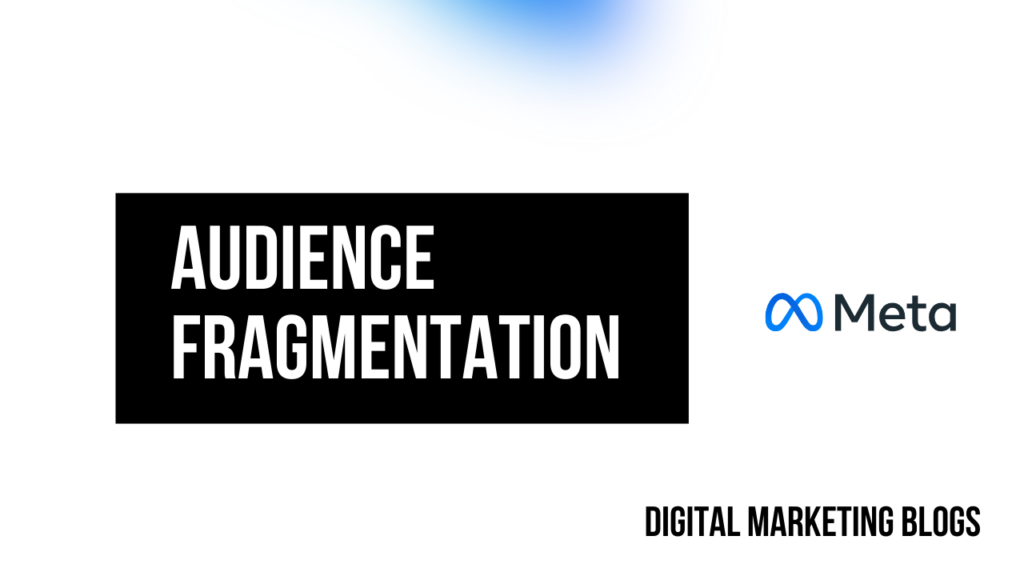A Simple Guide for Beginners
If you’ve ever run ads on Facebook or Instagram using Meta Ads Manager, you’ve probably seen the many audience targeting options available. You can choose interests, behaviors, locations, demographics, and even custom audiences. But when you start creating too many small, specific audiences, something called audience fragmentation can happen.
What is Audience Fragmentation?
Audience fragmentation happens when your total target audience is split into too many smaller groups. This often occurs when advertisers use too many filters or create multiple ad sets for very specific audience segments.
For example, if you create separate ad sets for:
-
Men aged 25-30 in Calicut
-
Women aged 25-30 in Calicut
-
Men aged 31-35 in Kochi
-
Women aged 31-35 in Kochi
You are fragmenting your audience instead of targeting one large group.
While segmentation is good for personalizing ads, too much fragmentation can be harmful.
Why Audience Fragmentation Matters
Here’s what happens when your audience is too fragmented:
1. Higher Costs
Each ad set competes in the auction separately. If your audience is too small, the cost per result (CPC, CPM) may go up because Meta doesn’t have enough data to optimize.
2. Poor Learning Phase Performance
Meta Ads Manager needs enough data to learn and optimize your ad delivery. Fragmented audiences slow down the learning process, which means your ad performance may not reach its full potential.
3. Limited Reach
Smaller audiences can mean fewer impressions. Your ads may not be shown enough, which reduces the chances of getting clicks, leads, or conversions.
4. Repetitive Targeting
You might unknowingly show the same ad to the same people across multiple ad sets. This leads to ad fatigue and wasted money.
Real Example: What Fragmentation Looks Like
Imagine you’re running a campaign to promote a digital marketing course. You decide to create 10 different ad sets targeting different combinations of age, gender, and location. Each ad set has a small budget.
What happens?
-
Meta has to split the budget across all 10 ad sets.
-
Each ad set gets fewer impressions.
-
The system doesn’t get enough data to optimize.
-
Your campaign struggles to perform.
Instead, if you combined similar groups into 2 or 3 broader ad sets, Meta could better optimize for conversions.
How to Avoid Audience Fragmentation
Here are some easy tips to help you avoid fragmenting your audience in Ads Manager:
✅ Combine Similar Audiences
Group similar audience segments together. For example, instead of separating based on narrow age ranges, try broader ranges like 25-40.
✅ Use Advantage+ Placements
Let Meta choose where your ad appears. The system will find the best placements for you.
✅ Use CBO (Campaign Budget Optimization)
This allows Meta to automatically distribute the budget among your ad sets based on performance, reducing the risk of underperforming segments.
✅ Focus on Campaign Objective
Always ask: what is your main goal? If your objective is lead generation, don’t split your audience unless absolutely necessary.
✅ Use Lookalike Audiences
Instead of targeting many small groups, use Lookalike Audiences to reach people similar to your current customers or website visitors.
When Is Audience Segmentation Still Useful?
Audience segmentation is not always bad. In some cases, you need to break your audience into groups:
-
When A/B testing creatives or headlines
-
When you want to measure performance in different locations
-
When you’re selling products to clearly different demographics (e.g. kids vs. seniors)
The key is to keep the segments big enough to give Meta enough data to optimize.
Pro Tips for Better Results
As a digital marketing trainer in Calicut, I always recommend the following to my students and clients:
-
Don’t over-segment unless you have a very large budget.
-
Monitor your ad sets closely during the learning phase.
-
Use clear naming for each ad set so you can easily analyze results.
-
Use Pixel and Events Manager to track real results like purchases or form fills.
Audience fragmentation is a common mistake that even experienced marketers make. The good news is, it’s easy to fix once you understand how Meta’s algorithm works.
Final Thoughts
Audience fragmentation in Ads Manager can silently kill your ad performance. While segmentation is useful, breaking your audience into too many tiny groups does more harm than good — especially if you’re working with a limited budget.
If you want to succeed with Meta Ads, focus on consolidating your audience, setting clear goals, and letting Meta optimize with enough data. This way, you’ll get better results, lower costs, and more conversions.
Whether you’re just getting started with ads or looking to improve your campaigns, understanding and avoiding audience fragmentation is key.
If you’re looking to learn more about ad strategies, campaign setup, or become a pro at Meta Ads, reach out to an experienced digital marketer in Calicut who can guide you with real-world experience and hands-on training.



